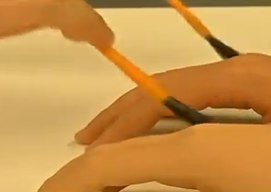Researchers Record the Moment of Inception…in a Hungry Zebrafish. We’re Next!
Friday, February 1st, 2013‘Squirrel!’
Ever wonder what it looked like at the inception point of a thought? Like when your watching ‘fail videos’ online and you do that mental cringe at the exact moment that you’re watching someone sledding down a hill on an oil-pan and suddenly the shot pans far enough to see the gaggle of unattentive people about to meet said oil-pan driver?
Wonder no more!
Researchers in Japan have actually filmed that ‘Oh $#%*!’ moment…
In a zebrafish.
Watch the video. That sudden flash of light takes place the moment the fish noticed food being put into the tank. Zebrafish aren’t going to be taking over the world anytime soon with all of their incredible cerebral abilities, but that was the point of this…to record the inception of a thought in a more simple brain simply to see if it could be done.
A double-transgenic larva was embedded in agarose, and a spot was presented on an LCD display placed on the right-eye side. Ca2+ signals were detected on the left tectum upon appearance (ON) and disappearance (OFF) of the spot. The spot was shown for the first 3 s in this 6 s movie. The video is shown at 3x real time.
Experiments are expected to take place on more advanced brains way too soon.
We could sit around all day and come up with scenarios about this stunning breakthrough.
But if you were a zebrafish, we’d already know that.
[Gizmodo]












